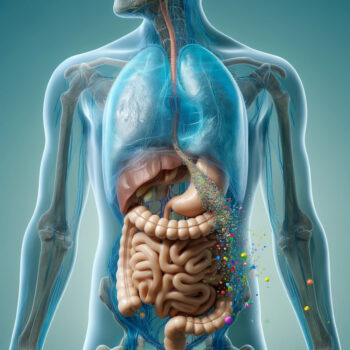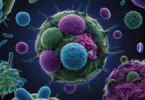Staff Writer for Wake Up World
In an eye-opening new study from the University of New Mexico, researchers reveal how microplastics, those minuscule invaders nearly invisible to the naked eye, are breaching our bodily barriers and making their way into essential organs like the kidneys, liver, and even the brain. This groundbreaking research underscores the alarming reality of microplastics’ journey from our gut to our most critical tissues, highlighting a hidden threat with potentially significant health implications.
What Are Microplastics?
[pro_ad_display_adzone id=”110028″]
Microplastics are tiny plastic particles less than five millimeters in size. Despite their small size, they pose a large-scale threat to environmental and human health. They enter our bodies through various means, including the water we drink, the food we eat, and the air we breathe. The study suggests that the average person ingests about 5 grams of microplastics weekly—the equivalent weight of a credit card.
From Gut to Organ: The Microplastics’ Pathway
The new findings, published in the journal Environmental Health Perspectives, detail how microplastics can cross the gastrointestinal barrier and migrate into organs such as the liver, kidneys, and brain, altering metabolic pathways in these tissues. Eliseo Castillo, PhD, an associate professor in the Division of Gastroenterology & Hepatology at the UNM School of Medicine and a leading figure in microplastic research, explains the implications of their presence in our bodies.
“We could detect microplastics in certain tissues after the exposure,” Castillo shares. “That tells us it can cross the intestinal barrier and infiltrate into other tissues.”
The Impact of Microplastics on Health
The study sheds light on the potential long-term accumulation of microplastics in the body and their ability to exacerbate underlying health conditions, particularly chronic gastrointestinal diseases. Castillo points out that even healthy laboratory animals showed changes after brief microplastic exposure, raising concerns about the particles’ effects on individuals with pre-existing health issues.
“It is changing the metabolism of the cells, which can alter inflammatory responses,” Castillo notes. “During intestinal inflammation – states of chronic illness such as ulcerative colitis and Crohn’s disease, which are both forms of inflammatory bowel disease – these macrophages become more inflammatory and are more abundant in the gut.”
Future Research and Implications
As the research team continues to investigate the impacts of microplastics, they are exploring how factors like diet might affect the uptake of these particles. The ongoing study will compare the effects of different diets on microplastic absorption, aiming to provide insights that could influence future dietary recommendations and public health policies.
Moreover, Castillo’s research is paving the way for a better understanding of how microplastics influence the gut microbiota, a key factor in overall health. “Multiple groups have shown microplastics change the microbiota, but how it changes the microbiota hasn’t been addressed,” he states.
The Call to Action
Castillo hopes that the findings will inspire changes in how society manages plastic production and waste, emphasizing the need for improved filtration and disposal methods to reduce the presence of microplastics in our environment.
“At the end of the day, the research we are trying to do aims to find out how this is impacting gut health,” Castillo concludes. Research continues to show the importance of gut health. If you don’t have a healthy gut, it affects the brain, the liver, and so many other tissues. So even imagining that the microplastics are doing something in the gut, chronic exposure could lead to systemic effects.”
This study is a crucial reminder of the interconnectedness of our environment, choices, and health. It calls us to reconsider our daily interactions with plastic and to take actionable steps towards safeguarding our health against the unseen dangers of microplastics.
Journal Reference
“In Vivo Tissue Distribution of Polystyrene or Mixed Polymer Microspheres and Metabolomic Analysis after Oral Exposure in Mice” by Eliseo Castillo et al. Environmental Health Perspectives
About the Author
Lily Anderson is an enthusiastic writer and curious investigator of the latest scientific developments. Driven by a strong desire to learn, she has a knack for simplifying complex concepts into engaging stories, making science accessible and interesting to a broad audience. Lily’s work is important for connecting specialists with the general public, sparking wonder and fostering meaningful conversations about new scientific discoveries.
[pro_ad_display_adzone id=”110027″]







